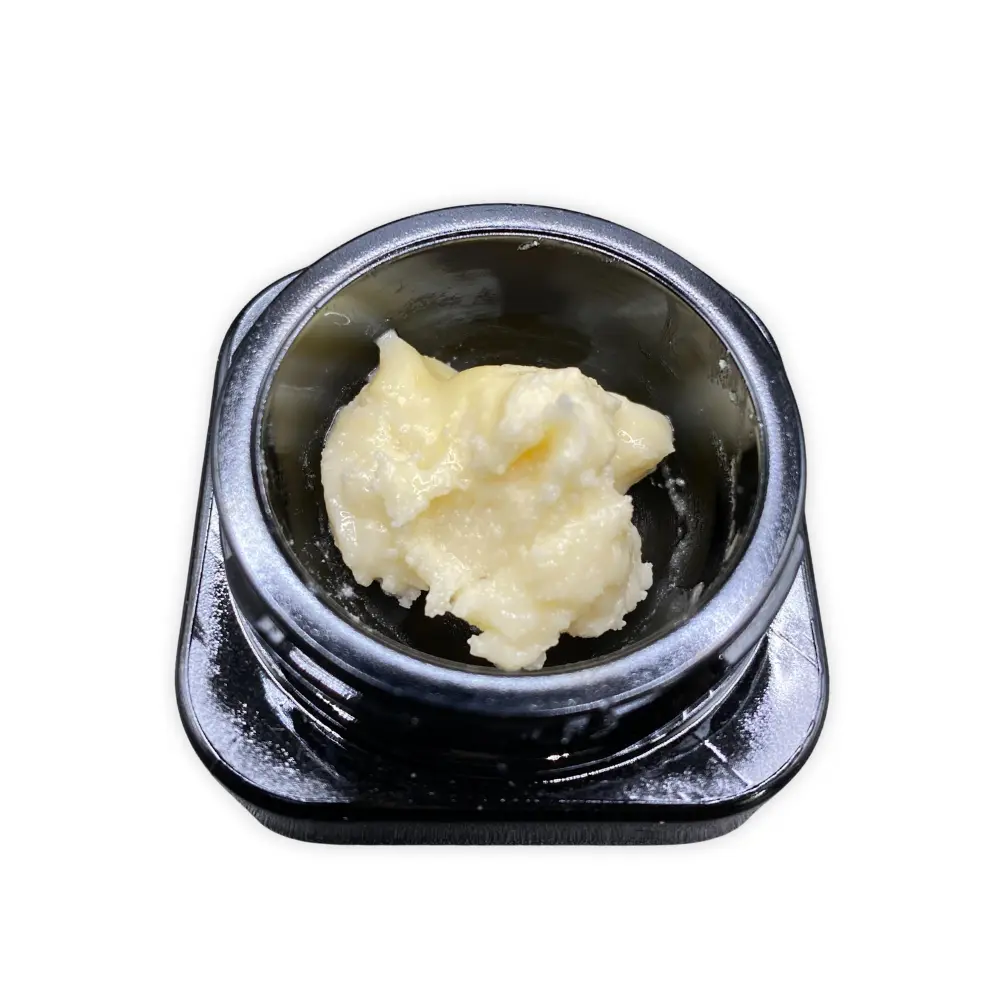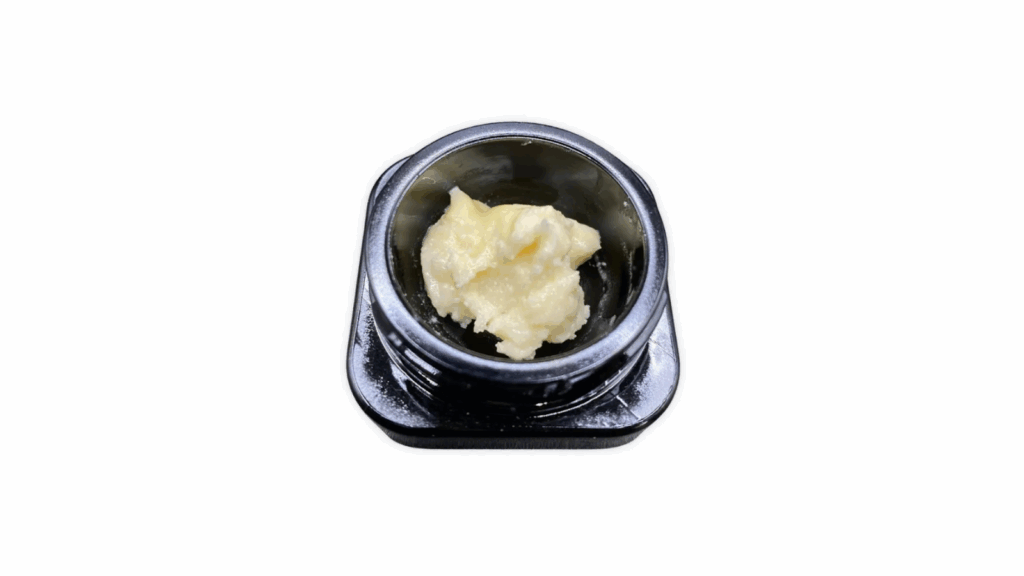THCA Badder

THCA Badder
Maybe you’re curious about how hemp-derived THCA works, or you’re ready to explore concentrates that feel a little more cosmic than your usual flower. Whatever brings you here, you’re in the right place.
At JK Distro, we believe everyone should have access to clean, lab-tested hemp concentrates made with transparency and care. That’s why we’re breaking down what makes THCA Badder a standout in the galaxy of hemp-derived extracts. Buckle up because we’re guiding you through the world of THCA Badder, where format, flavor, and cannabinoid curiosity collide.
What is THCA Badder?
THCA Badder is one of the newest stars in the galaxy of hemp-derived concentrates, known for its smooth texture and bold cannabinoid profile. But what exactly is it, and why are so many people curious about it? Let’s break it down.
What Makes THCA Badder Unique?
Before discussing how to use THCA Badder, let’s examine its characteristics and why it’s become a standout. From texture to cannabinoid content, this extract offers something distinct for anyone seeking flavor-forward, terpene-rich, and potent hemp-derived options.
A Closer Look at THCA Badder
THCA Badder is a soft, whipped extract crafted from cannabis hemp plants. Badder gets its smooth, pliable consistency through a careful extraction and agitation process that preserves potency and aroma. You’re left with a creamy golden concentrate that’s easy to portion and rich in active plant compounds.
Unlike hemp-derived Delta 8 THC or Delta 9 THC products, THCA Badder contains high levels of THCA, the non-psychoactive acidic form of Delta 9 THC that transforms through heat exposure. Because of this, THCA Badder is often chosen by people who want to explore new ways to enjoy hemp concentrates with precision and a well-preserved terpene profile.
Since THCA Badder is produced with minimal processing and small-batch attention, it often contains a broader range of minor cannabinoids and fragrant terpenes. That combination contributes to what’s known as the entourage effect–the idea that cannabinoids and terpenes work better together than they do alone.
How to Use THCA Badder in Your Routine
Once you’ve picked your strain, the next step is figuring out how to bring THCA Badder into your day. Here are a few simple ways people enjoy it:
- Dab using a rig or e-rig: Heat a small amount of THCA Badder using a dab rig or electronic rig. Start with lower temperatures (around 350°F to 450°F) to preserve flavor and aroma. Many users prefer this method for its direct, flavorful experience and ability to fine-tune temperature.
- Top your flower: Sprinkle a small amount of THCA Badder onto a bowl or inside a pre-roll. This adds depth to your session and brings out more of the strain’s natural characteristics.
- Use a vaporizer for concentrates: Portable devices built for dabbing or vaping concentrates make it easy to enjoy THCA Badder on the go. Look for options with adjustable temperature settings for a more tailored experience.
- Store it properly for best results: Keep your THCA Badder in a non-stick, airtight container in a cool, dark place. Proper storage helps maintain its consistency, aroma, and cannabinoid content over time.
Exploring the Benefits of THCA Badder
It’s no surprise that THCA is making a scene, and when it’s delivered in a whipped, terpene-rich Badder format, it can change how you engage with hemp on a day-to-day basis. Here are a few reasons people are adding it to their sessions:
- Brings cannabinoids and terpenes together: Small-batch THCA Badder is known for preserving more of the plant’s original profile, which many enthusiasts seek when exploring combinations of cannabinoids and terpenes, a concept often referred to as the entourage effect.
- Fits into solo or creative rituals: Some people use Badder during journaling, wind-down time, or while prepping for creative projects. THCA Badder texture and strain variety make it easy to personalize based on how you’re approaching your day.
- Adaptable for many experience levels: From beginners to seasoned dabbers, THCA Badder’s smooth texture makes it easier to portion and experiment with. You can try low-temp dabs, flower top-offs, or device-compatible sessions depending on your setup and preferences.
How THCA Badder Compares to Other Hemp Concentrates
If you’re already exploring the universe of hemp extracts, you’ve probably come across options like shatter, wax, live resin, and crumble. Let’s take a closer look at where hemp-derived THCA Badder stands among the many concentrated players.
Texture and Consistency
Many concentrates lean toward the dry or brittle side. Shatter tends to break apart like glass, and crumble usually has a chalkier, flakier structure. THCA Badder, on the other hand, brings a softer, whipped texture to the table. Its appearance resembles thick cake frosting, dense but pliable, with a spreadable quality that makes it easy to scoop, measure, and apply.
This format is a favorite among people who appreciate clean handling and a little more control during prep. Unlike crumbly options that can flake or scatter, THCA Badder holds its shape and texture, even after multiple sessions, which makes it easier to portion and store.
Cannabinoid Content and Breakdown
What truly sets THCA Badder apart is its cannabinoid profile. While other concentrates may prioritize Delta 8 THC, CBD, or a blend of minor cannabinoids, Badder focuses heavily on hemp-derived THCA, the acidic precursor to Delta 9 THC that converts when heat is applied. Here’s what you’ll typically find in our small-batch THCA Badder:
- 95.4% total cannabinoids
- 70.87% THCA
- 7.91% CBD
- Naturally robust terpene density
That high THCA concentration reflects both purity and intent. A lab profile like this gives you the chance to tailor your experience more precisely, especially if you’re dialing in flavor, method, or cannabinoid balance. Likewise, the added presence of CBD and other supporting compounds creates a more layered cannabinoid expression than many single-focus extracts.
Aroma and Flavor
Some concentrates are all function and very little flavor. THCA Badder takes a more nuanced route by preserving its terpene structure throughout the production process. Gentle whipping and strict temperature control help retain the plant’s natural aromatic profile, so what you smell and taste feels connected to the strain’s original character. Current flavor options include:
- Amnesia Haze: bright, citrusy, and sharp.
- Lemon Cake: zesty with a sweet finish.
Blueberry Muffin: mellow and dessert-like. - Chocolate Diesel: earthy with a gassy edge.
Each variety delivers distinct aromatics and flavor notes that linger well beyond the first dab. If you’re someone who pays attention to how a strain smells, tastes, and performs when heated, THCA Badder offers a flavorful way to stay close to the source.

Why THCA Badder from JK Distro Fits the Way You Live
Choosing hemp-derived THCA Badder is about more than enjoying a new cannabinoid experience; rather, it’s about prioritizing quality, transparency, and the values that matter to our community. So what sets our THCA Badder apart?
How It’s Made
Every batch of our THCA Badder begins with trusted U.S. growers who use sustainable cultivation practices. We source clean cannabis hemp from farms that prioritize quality at the root. Then our team steps in to extract and whip each batch in small quantities, focusing on texture, cannabinoid clarity, and terpene preservation at every step.
See What's Inside, Plain and Simple
We want you to know exactly what you’re getting. That’s why we back each jar of THCA Badder with third-party lab testing. These results break down cannabinoid percentages, terpene profiles, and overall composition. A lot of people look for specific THCA levels or want consistency in flavor from strain to strain. Rather than making promises about what it might do, we just show you the numbers so you can decide what fits your preferences.
Built to Fit Real-Life Routines
Every day calls for something a little different. Some people look for smooth flavor and aromatic richness, while others want a format that fits into their wind-down sessions. That’s why we whip our THCA Badder in a range of strain varieties, from bold and citrusy to mellow and sweet, and offer both premium batches and budget-friendly go-to picks. You don’t have to compromise to find something that suits your pace or setup.
A Support Team That Listens
Exploring THCA concentrates can come with questions, and we’re here to help. Our customer support team comprises people who understand hemp products and care about your experience. From dosing tips to strain recommendations, our team brings personal insight to every interaction.
Read more:
Frequently Asked Questions About THCA Badder
Is THCA Badder legal?
The legality of hemp-derived THCA Badder depends on both federal and state regulations. Federally, hemp-derived products that contain less than 0.3% Delta 9 THC by dry weight are permitted under the 2018 Farm Bill. However, state laws vary and may be more restrictive. Before adding THCA Badder to your daily routine, we recommend checking your local laws.
What is the difference between THCA Badder and wax?
Both THCA Badder and wax are hemp concentrates, each with a unique texture and consistency. THCA Badder is whipped during production, resulting in a soft, malleable, and “buttery” consistency. Wax, on the other hand, is slightly firmer and has a crumbly texture. Both contain high concentrations of cannabinoids like hemp-derived THCA, but Badder is often praised for its ease of use and terpene-packed flavor.
How do you store THCA Badder?
To keep your THCA Badder as out-of-this-world as the day you got it, store it in an airtight, non-stick container, away from direct sunlight and heat. A cool, dark place (like the back of your fridge or a drawer away from appliances) will help maintain its stellar potency and fresh terpene profile for longer.
Does THCA Badder have a flavor?
Absolutely! Thanks to its gentle extraction process, THCA Badder is famous for preserving a galaxy of terpenes, the aromatic compounds responsible for each strain’s signature flavor and aroma. Expect rich, nuanced notes ranging from citrus and pine to earthy or sweet, depending on the strain.
Is THCA Badder psychoactive?
On its own, hemp-derived THCA is non-psychoactive. It’s only when you heat (or “decarboxylate”) THCA that it converts into Delta 9 THC, which is the cannabinoid responsible for psychoactive effects. So, while raw THCA won’t make you feel “lifted,” consuming THCA Badder using heat may deliver an experience that’s truly out of this world.
What is the potency of THCA Badder?
THCA Badder is one of the most potent hemp concentrates available, often boasting purity levels north of 70–90% THCA. That means a little goes a long way, and it’s essential to start small, especially if you’re new to concentrates. Third-party lab results back every batch we offer, so you always know exactly what you’re getting.
Is there a difference between THCA Badder and budder?
You might hear “Badder” and “budder” used interchangeably, and the difference is subtle in practice. Both are hemp-derived concentrates with a whipped, creamy texture. “Badder” usually refers to a fluffier, wetter consistency, while “budder” tends to be a bit creamier and more solid.
What are the effects of consuming THCA Badder?
When heated, THCA Badder may offer effects similar to those associated with Delta 9 THC – think euphoria, relaxation, and a potential sense of wellness. Studies suggest these effects depend on dose, individual biology, and the strain’s terpene profile. Many users appreciate THCA Badder’s quick onset and strong, clean experience. As always, we empower you to explore safely, starting low and going slow to find your sweet spot.
Sources:
- LaVigne, J. E., Hecksel, R., Keresztes, A., & Streicher, J. M. (2021). Cannabis sativa terpenes are cannabimimetic and selectively enhance cannabinoid activity. Scientific Reports, 11, Article 8232. https://doi.org/10.1038/s41598-021-87740-8
- U.S. Congress. (2018). Agriculture Improvement Act of 2018 (H.R. 2, 115th Cong.). Public Law No. 115‑334. https://www.congress.gov/bill/115th-congress/house-bill/2
- Schwarz, A. M., et al. (2024). Terpenes from Cannabis sativa induce antinociception in mouse chronic neuropathic pain via activation of spinal cord adenosine A₂A receptors. Pain, 165(11), e145–e161. https://pubmed.ncbi.nlm.nih.gov/38709489/

